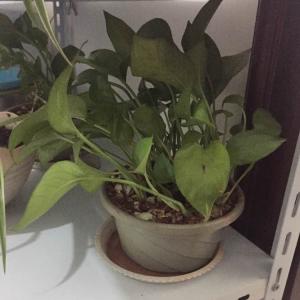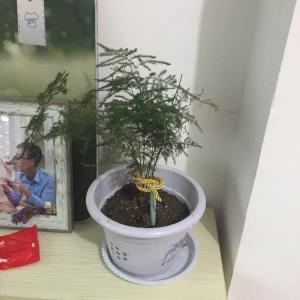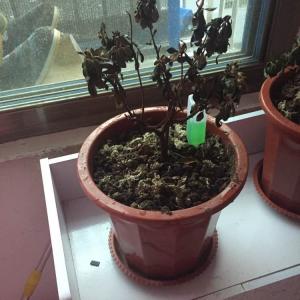文章
Dummer. ゛☀
2017年07月14日

Family - Santalaceae
Stems - To +30cm tall, simple to branching, erect, glabrous, herbaceous, from underground rhizomes.
Leaves - Alternate, sessile or on very short petiole to -1mm, entire, glabrous or glaucous, oblong-elliptic to narrowly obovate, to -1cm broad, +3cm long.
Inflorescence - Loose, paniculate, terminal clusters of 4-6 flowered cymules. Pedicels 1-4mm long, glabrous.
Flowers - Apetalous. Calyx tube green, to 3mm long, campanulate, glabrous, with 4-5 lobes. Lobes to 2mm long, white, glabrous externally, sparse pubescent internally. Stamens 5, opposite the calyx lobes. Filaments to -1mm long, glabrous. Anthers yellow. Style glabrous, 2.5mm long.
Flowering - April - July.
Habitat - Open woods, slopes, glades, ridges, prairies, bluffs.
Origin - Native to U.S.
Other info. - This little plant is parasitic on neighboring plants by means of its rhizomes. The rhizomes are tan, thin, and fairly long.
The plant can be found in dry rocky areas of the habitats mentioned above. It ranges throughout the state except in a few counties of the bootheel.
A common synonym is C. umbellata (L.) Nutt.
Stems - To +30cm tall, simple to branching, erect, glabrous, herbaceous, from underground rhizomes.

Leaves - Alternate, sessile or on very short petiole to -1mm, entire, glabrous or glaucous, oblong-elliptic to narrowly obovate, to -1cm broad, +3cm long.
Inflorescence - Loose, paniculate, terminal clusters of 4-6 flowered cymules. Pedicels 1-4mm long, glabrous.
Flowers - Apetalous. Calyx tube green, to 3mm long, campanulate, glabrous, with 4-5 lobes. Lobes to 2mm long, white, glabrous externally, sparse pubescent internally. Stamens 5, opposite the calyx lobes. Filaments to -1mm long, glabrous. Anthers yellow. Style glabrous, 2.5mm long.

Flowering - April - July.
Habitat - Open woods, slopes, glades, ridges, prairies, bluffs.

Origin - Native to U.S.
Other info. - This little plant is parasitic on neighboring plants by means of its rhizomes. The rhizomes are tan, thin, and fairly long.
The plant can be found in dry rocky areas of the habitats mentioned above. It ranges throughout the state except in a few counties of the bootheel.
A common synonym is C. umbellata (L.) Nutt.
0
0
文章
Dummer. ゛☀
2017年07月14日

Family - Brassicaceae
Stems - To +40cm tall, erect, herbaceous, terete, hispidulous (mainly in the basal half), green, purplish at the base, simple to 1-2 branched in the apical half, from a short knotty rhizome.
Leaves - Alternate, petiolate below, becoming sessile above. Basal leaves on petioles to +8cm long. Petioles glabrous to hipidulous, flattened. Blades reniform to broadly ovate, glabrous, with wavy margins, +5cm long and broad. Cauline leaves becoming sessile or short petiolate, few (1-5), ovate to lanceolate, with a few coarse teeth, glabrous, light green below (abaxially), deep dull green above, with sparse ciliolate margins or not.
Flowers - Flowers not seen. Siliques to 3cm long, 2cm broad, glabrous, with a beak to 4mm long, 2-valved, with a small constriction between the seeds.
Flowering - March - April.
Habitat - Low or swampy woodlands.
Origin - Native to U.S.
Other info. - This attractive species can be found mainly in the northern half of Missouri in a handful of counties. The plant can be identified by its reniform basal leaf blades, few, sessile or nearly sessile cauline leaves, and big flowers. The flowers are typically purple but the plants photographed in Columbia, MO., had white flowers.
Stems - To +40cm tall, erect, herbaceous, terete, hispidulous (mainly in the basal half), green, purplish at the base, simple to 1-2 branched in the apical half, from a short knotty rhizome.

Leaves - Alternate, petiolate below, becoming sessile above. Basal leaves on petioles to +8cm long. Petioles glabrous to hipidulous, flattened. Blades reniform to broadly ovate, glabrous, with wavy margins, +5cm long and broad. Cauline leaves becoming sessile or short petiolate, few (1-5), ovate to lanceolate, with a few coarse teeth, glabrous, light green below (abaxially), deep dull green above, with sparse ciliolate margins or not.
Flowers - Flowers not seen. Siliques to 3cm long, 2cm broad, glabrous, with a beak to 4mm long, 2-valved, with a small constriction between the seeds.
Flowering - March - April.

Habitat - Low or swampy woodlands.
Origin - Native to U.S.
Other info. - This attractive species can be found mainly in the northern half of Missouri in a handful of counties. The plant can be identified by its reniform basal leaf blades, few, sessile or nearly sessile cauline leaves, and big flowers. The flowers are typically purple but the plants photographed in Columbia, MO., had white flowers.
0
0
文章
蒋欣
2017年07月13日

一、#雀舌黄杨 盆景的养护方法
1、生长环境
雀舌黄杨喜温暖湿润和阳光充足环境,耐干旱和半阴,要求疏松、肥沃和排水良好的沙壤土。
2、浇水
第一步,冲干不动土(满足盆内需水量);
第二步,枝叶要湿透(多角度浇);
第三步,喷雾。
暑天或温度在20℃以上,盆内不缺水,就按第二、第三步浇;温度在20℃以下10℃以上,盆内又不缺水,冬天上午在阳光下,一天一次都按第三步浇水。秋天“白露”以后,等露水干了,按第三步喷水。霜天早晚不浇水;“三九天”寒潮来之前不浇水以防冻土,冻枝叶,同样要保持盆内滤水通气好。
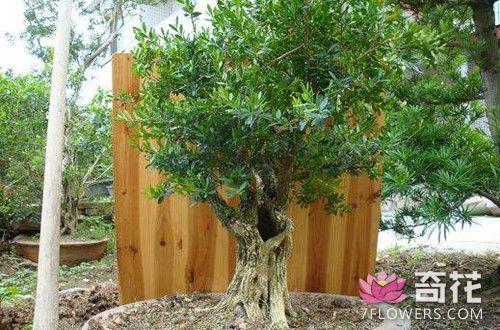
3、施肥
(1)可常年叶面喷施非常稀薄的氮肥(尿素稀释液,2000倍),切忌不能沾磷肥及钾肥
(2)雀舌黄杨的肥要坚持以蔸肥为主,以自然肥为主,以人畜粪便为主。
(3)慎施鸡鸭粪和高效肥,切记不能施没有腐熟的肥和过量施肥,要做到薄肥勤施。
(4)在季节变换前,施点季节肥,如初春施催芽肥,夏天施壮叶肥,暑天施抗温肥,冬天施保温肥;
(5)每次修剪后,施点补尝肥,雨季和暑天盆内过水多施点补充肥,长势不好的要要施酌情肥。
(6)平常浇水的时候,也可掺入微量氮肥,那样养出的叶片非常漂亮,深绿色,有一层光泽。
4、摘心
雀舌黄杨盆景主干长势特慢,可嫩枝条长势却非常的快,惟有用“摘心”来控制,才能保证观赏价值。在枝条没有木质化之前,留一对,最多两对嫩叶片,其余摘掉或剪掉,在适当的水,肥等条件下,十天半月它就会发出两个嫩芽来。就这样周而复始,它的枝条显得短而粗,叶片可以2的积数倍增,不断提高观赏价值。
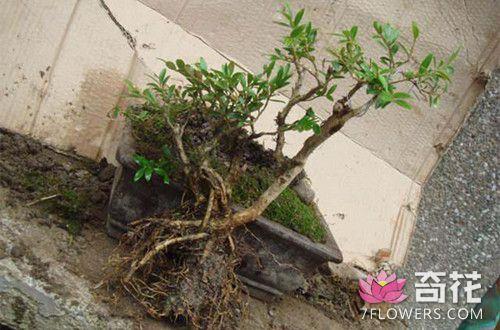
5、翻盆
一般2~3年进行一次,时间以春季萌发前为好。结合翻盆剪去部分老根及过长过密根系,换去1/2旧上,塞以肥沃疏松的培养土,以利根系发育。
6、防病治虫
黄杨主要虫害有介壳虫和黄杨尺螃,介壳虫可用人工刷洗杀之,或用80%敌敌畏1500倍液喷杀;黄杨尺嫂用80%敌百虫可狙性粉剂喷杀,或用40%氧化乐果1000~2000倍喷杀。主要病有煤污病,会引起落叶现象,防治关键是清除介壳虫,并经常喷叶面水,冲洗灰尘,使之生长良好。
二、注意事项
黄杨忌强光,栽植过程中只宜散光,不宜强光曝晒。刚下山的、或长途运输及刚翻盆的黄杨,先要阴养一段时间,再转入正常养护。雀舌黄杨盆景的摆放,最好能选择上午能晒阳,下午较阴凉,空气流通好,雨露靠自然的地方为佳。如果室内观赏,最好十天、半月后,让它又去日晒雨淋。
1、生长环境
雀舌黄杨喜温暖湿润和阳光充足环境,耐干旱和半阴,要求疏松、肥沃和排水良好的沙壤土。
2、浇水
第一步,冲干不动土(满足盆内需水量);
第二步,枝叶要湿透(多角度浇);
第三步,喷雾。
暑天或温度在20℃以上,盆内不缺水,就按第二、第三步浇;温度在20℃以下10℃以上,盆内又不缺水,冬天上午在阳光下,一天一次都按第三步浇水。秋天“白露”以后,等露水干了,按第三步喷水。霜天早晚不浇水;“三九天”寒潮来之前不浇水以防冻土,冻枝叶,同样要保持盆内滤水通气好。

3、施肥
(1)可常年叶面喷施非常稀薄的氮肥(尿素稀释液,2000倍),切忌不能沾磷肥及钾肥
(2)雀舌黄杨的肥要坚持以蔸肥为主,以自然肥为主,以人畜粪便为主。
(3)慎施鸡鸭粪和高效肥,切记不能施没有腐熟的肥和过量施肥,要做到薄肥勤施。
(4)在季节变换前,施点季节肥,如初春施催芽肥,夏天施壮叶肥,暑天施抗温肥,冬天施保温肥;
(5)每次修剪后,施点补尝肥,雨季和暑天盆内过水多施点补充肥,长势不好的要要施酌情肥。
(6)平常浇水的时候,也可掺入微量氮肥,那样养出的叶片非常漂亮,深绿色,有一层光泽。
4、摘心
雀舌黄杨盆景主干长势特慢,可嫩枝条长势却非常的快,惟有用“摘心”来控制,才能保证观赏价值。在枝条没有木质化之前,留一对,最多两对嫩叶片,其余摘掉或剪掉,在适当的水,肥等条件下,十天半月它就会发出两个嫩芽来。就这样周而复始,它的枝条显得短而粗,叶片可以2的积数倍增,不断提高观赏价值。

5、翻盆
一般2~3年进行一次,时间以春季萌发前为好。结合翻盆剪去部分老根及过长过密根系,换去1/2旧上,塞以肥沃疏松的培养土,以利根系发育。
6、防病治虫
黄杨主要虫害有介壳虫和黄杨尺螃,介壳虫可用人工刷洗杀之,或用80%敌敌畏1500倍液喷杀;黄杨尺嫂用80%敌百虫可狙性粉剂喷杀,或用40%氧化乐果1000~2000倍喷杀。主要病有煤污病,会引起落叶现象,防治关键是清除介壳虫,并经常喷叶面水,冲洗灰尘,使之生长良好。
二、注意事项
黄杨忌强光,栽植过程中只宜散光,不宜强光曝晒。刚下山的、或长途运输及刚翻盆的黄杨,先要阴养一段时间,再转入正常养护。雀舌黄杨盆景的摆放,最好能选择上午能晒阳,下午较阴凉,空气流通好,雨露靠自然的地方为佳。如果室内观赏,最好十天、半月后,让它又去日晒雨淋。
0
1
文章
Dummer. ゛☀
2017年07月13日

Family - Asclepiadaceae
Stems - To +1m tall, densely pubescent in upper 1/2, sparse pubescent to glabrous below, herbaceous, simple, erect to ascending, from a thick taproot, with milky sap, often reddish in strong sun.
Leaves - Alternate, short-petiolate, dense on stem. Petiole to 7mm long, scabrous. Blade linear-lanceolate, entire, to +13cm long, 1.5cm broad, scabrous on margins and midrib. Margins thickened and often reddish.
Inflorescence - Axillary umbellate cymes with +/-60 flowers. Peduncles dense pubescent. Pedicels hispidulous, to +/-1.5cm long in flower. Cymes subtended by linear bracts to 6mm long. Bracts pubescent.
Flowers - Petals 5, reflexed, to 5mm long, 1.5mm broad, glabrous or very sparse pubescent, greenish white and purplish at apex. Anther head 3mm long(tall), 2.2mm in diameter. Pollinia 1.4mm long. Hoods 2.1mm long, whitish with purple tinge at base, appressed and attached to column for most of length. Carpels 2, 2.1mm long, glabrous. Sepals 5, reflexed, ovate, 2.1mm long, 1.2mm broad, hispidulous externally, glabrous internally, reddish at apex. Follicles fusiform, erect, to +12cm long, +/-1cm in diameter, pubescent. Seeds to 9mm long. Coma whitish, to +3cm long.
Flowering - May - August.
Habitat - Prairies, glades, and pastures.
Origin - Native to U.S.
Other info. - I placed this species in the white flowers section of this site because from a distance the entire inflorescence has a whitish appearance. Close up, however, the flowers have a definite purplish-green tinge. This species is easy to ID in the field because of its stout pubescent stems, many flowered inflorescences, and linear lanceolate leaves (which are alternate). The plant is common throughout most of the state except for apparently some areas of the Ozarks.
Stems - To +1m tall, densely pubescent in upper 1/2, sparse pubescent to glabrous below, herbaceous, simple, erect to ascending, from a thick taproot, with milky sap, often reddish in strong sun.

Leaves - Alternate, short-petiolate, dense on stem. Petiole to 7mm long, scabrous. Blade linear-lanceolate, entire, to +13cm long, 1.5cm broad, scabrous on margins and midrib. Margins thickened and often reddish.
Inflorescence - Axillary umbellate cymes with +/-60 flowers. Peduncles dense pubescent. Pedicels hispidulous, to +/-1.5cm long in flower. Cymes subtended by linear bracts to 6mm long. Bracts pubescent.
Flowers - Petals 5, reflexed, to 5mm long, 1.5mm broad, glabrous or very sparse pubescent, greenish white and purplish at apex. Anther head 3mm long(tall), 2.2mm in diameter. Pollinia 1.4mm long. Hoods 2.1mm long, whitish with purple tinge at base, appressed and attached to column for most of length. Carpels 2, 2.1mm long, glabrous. Sepals 5, reflexed, ovate, 2.1mm long, 1.2mm broad, hispidulous externally, glabrous internally, reddish at apex. Follicles fusiform, erect, to +12cm long, +/-1cm in diameter, pubescent. Seeds to 9mm long. Coma whitish, to +3cm long.
Flowering - May - August.

Habitat - Prairies, glades, and pastures.
Origin - Native to U.S.
Other info. - I placed this species in the white flowers section of this site because from a distance the entire inflorescence has a whitish appearance. Close up, however, the flowers have a definite purplish-green tinge. This species is easy to ID in the field because of its stout pubescent stems, many flowered inflorescences, and linear lanceolate leaves (which are alternate). The plant is common throughout most of the state except for apparently some areas of the Ozarks.
0
0
文章
Dummer. ゛☀
2017年07月13日

Family - Brassicaceae
Stems - To 50cm tall, erect to decumbent, typically simple but also sometimes branching in upper 1/2, herbaceous, from a thin taproot or fibrous roots, purplish-green, fairly densely pubescent with branching and stellate hairs.
Leaves - Alternate. Basal leaves petiolate. Petioles to +2cm long. Blades coarsely and irregularly dentate, to +10cm long, +4cm broad, spatulate to broadly obovate, slightly pubescent with branching and stellate hairs. Cauline leaves sessile, auriculate-clasping, to +5cm long, +2cm broad, coarsely and irregularly dentate, densely stellate pubescent below, glabrous above, oblanceolate to broadly oblong, acute. Margins ciliolate.
Inflorescence - Terminal and axillary racemes, compact in flower, much elongated in fruit, to +20cm tall(long). Pedicels to 2m long in flower,(to 5mm in fruit), pubescent with simple and branching hairs.
Flowers - Petals 4, free, white, to 2.5mm long, 1mm broad, glabrous. Stamens 6. Filaments to 2mm long. Anthers yellow. Ovary longer than broad, terete, stellate pubescent. Sepals 4, free, 2mm long, 1mm broad, linear-subulate, brownish-green, sparsely stellate pubescent. Margins slightly lighter in color. Siliques terete, to 4cm long, stellate pubescent, spreading basically perpendicular to axis of inflorescence or ascending with maturity.
Flowering - April - June.
Habitat - Moist ground along streams, low woods, and bluffs.
Origin - Native to U.S.
Other info. - According to Steyermark there are two varieties of this species in Missouri. Variety Shortii has pubescent ovaries and fruit. Variety phalacarpa (M. Hopkins) Steyerm. has glabrous fruits and ovaries. Both varieties are fairly common in the state.
Stems - To 50cm tall, erect to decumbent, typically simple but also sometimes branching in upper 1/2, herbaceous, from a thin taproot or fibrous roots, purplish-green, fairly densely pubescent with branching and stellate hairs.

Leaves - Alternate. Basal leaves petiolate. Petioles to +2cm long. Blades coarsely and irregularly dentate, to +10cm long, +4cm broad, spatulate to broadly obovate, slightly pubescent with branching and stellate hairs. Cauline leaves sessile, auriculate-clasping, to +5cm long, +2cm broad, coarsely and irregularly dentate, densely stellate pubescent below, glabrous above, oblanceolate to broadly oblong, acute. Margins ciliolate.
Inflorescence - Terminal and axillary racemes, compact in flower, much elongated in fruit, to +20cm tall(long). Pedicels to 2m long in flower,(to 5mm in fruit), pubescent with simple and branching hairs.
Flowers - Petals 4, free, white, to 2.5mm long, 1mm broad, glabrous. Stamens 6. Filaments to 2mm long. Anthers yellow. Ovary longer than broad, terete, stellate pubescent. Sepals 4, free, 2mm long, 1mm broad, linear-subulate, brownish-green, sparsely stellate pubescent. Margins slightly lighter in color. Siliques terete, to 4cm long, stellate pubescent, spreading basically perpendicular to axis of inflorescence or ascending with maturity.
Flowering - April - June.

Habitat - Moist ground along streams, low woods, and bluffs.
Origin - Native to U.S.
Other info. - According to Steyermark there are two varieties of this species in Missouri. Variety Shortii has pubescent ovaries and fruit. Variety phalacarpa (M. Hopkins) Steyerm. has glabrous fruits and ovaries. Both varieties are fairly common in the state.
0
0
文章
金达威
2017年07月12日

1、浇水太少
#栀子花 喜水,夏季蒸发量非常大,通常叶子发黄是水跟不上造成的。
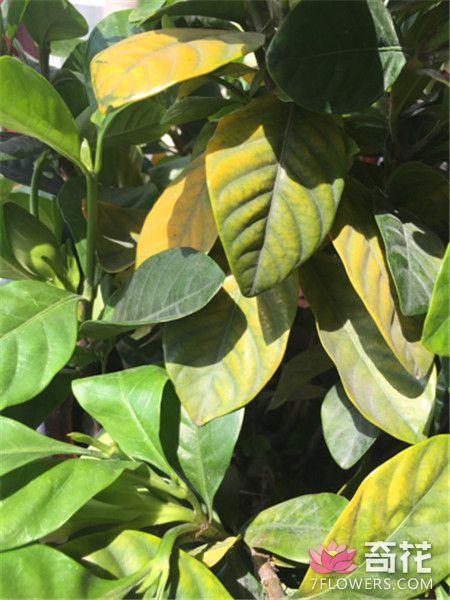
解决方法
室内养殖的栀子花大概2~3天就得浇一次水,如果是直接露养的,那大概1~2天就得浇一次水。
2、土壤偏碱
栀子花喜欢微酸性的土壤,但是北方的土壤一般都偏碱,就算是一开始不偏碱,一直浇自来水也会慢慢变碱。
解决方法
用1:1000~2000的硫酸亚铁溶液直接灌根,半个月或者是1个月1次都行~
#栀子花 喜水,夏季蒸发量非常大,通常叶子发黄是水跟不上造成的。

解决方法
室内养殖的栀子花大概2~3天就得浇一次水,如果是直接露养的,那大概1~2天就得浇一次水。
2、土壤偏碱
栀子花喜欢微酸性的土壤,但是北方的土壤一般都偏碱,就算是一开始不偏碱,一直浇自来水也会慢慢变碱。
解决方法
用1:1000~2000的硫酸亚铁溶液直接灌根,半个月或者是1个月1次都行~
1
5
文章
Colour_
2017年07月11日
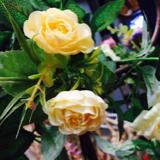
管花杜鹃形态特征
常绿直立灌木,高1-4(--6)米。枝条细长,幼枝带紫红色,疏生鳞片。叶散生 幼枝上,披针状椭圆形或披针状长圆形,长(3--)4-8(--15)厘米,宽1-3(--4) 厘米,顶端锐尖,基部楔形,上面暗绿色,有光泽,被褐色鳞片,鳞片相距为其直径的 1--3倍,下面苍绿色,被密而不等大的褐色至暗褐色的鳞片,相距为其直径或不及,侧脉明显;叶柄长5-12毫米,被鳞片。花序顶生或腋生,短总状,通常有4-6花;花梗长4-8毫米,纤细,带红色,有鳞片;花萼小,长约1毫米,浅5裂或仅为边檐 状,无鳞片;花冠管状,一面稍臌胀,长1.8-2.5厘米,橘红、朱红或肉红色,口部 浅5裂,裂片长圆形,直立;雄蕊10,花药短小,卵圆形,花丝下部被密毛;花柱下 部常被毛,偶尔无毛。蒴果长圆形,长8-10毫米,密被鳞片。花期7月,果期10 月。

管花杜鹃的繁殖方式
扦插繁殖
扦插繁殖是杜鹃花栽培中应用最多的繁殖方法,一般在5-6月份剪取健壮的半木质化的新枝,长约5-8厘米,剪除下部叶片,保留顶叶2-3片作插穗,插穗基部最好用吲哚丁酸或ABT生根粉等溶液浸蘸处理,然后扦插在疏松透气、富含腐植质的酸性土壤中,温度保持在20-25℃,遮阴并经常喷雾保湿,以促进萌发新根。
嫩枝繁殖
嫩枝繁殖是用劈接对于难以成活的名贵品种如西鹃等,先剪去嫩枝约3-4厘米作接穗,将基部用利刀削成楔形,用毛鹃作砧木,采用嫩枝劈接,然后置阴棚下用塑料薄膜绑扎,并用塑料袋将接穗和砧木一起罩住保湿。

管花杜鹃的养殖方法
肥水管理
杜鹃生长发育要求酸性土壤。由于北方土壤多偏碱性,因此盆土需用腐熟的松针叶土等腐植土混合配制。杜鹃的根系为须状细根,对肥料浓度及水质的要求严格,施肥时要遵循适时适量、薄肥勤施的原则。春季开花前为促使枝叶及花蕾生长,可每月追施一次磷肥。花后施1-2次氮磷为主的混合肥料。9-10月份孕蕾期施1-2次磷肥。在生长期、开花期肥水要求较多,冬季休眠、夏季生长缓慢时要控制肥水,以防烂根。杜鹃花喜湿润和凉爽的环境,北方气候干燥,应及时浇水并喷雾,以保持较高空气湿度。浇花水以矾肥水及雨水为好,如用常用水需加入少量硫酸亚铁及食醋。也可将西瓜或西红柿切成小块施入,对于改善土质及花朵质量也有良好效果。
整形修剪
为加速植株盛开,杜鹃常通过摘心来促发新枝,对于花朵簇拥、影响花形的可以提早疏蕾,这样不但使当年花大色鲜,也有利于植株来年生长开花。杜鹃萌发力强,枝条严重影响植株生长发育,降低其观赏性和商品性,因此需通过修枝来调整。修枝一般在春季花谢后及秋季进行,剪去枯枝、斜枝、徒长枝病虫枝及部分交叉枝,避免养分消耗,使整个植株开花丰满。
花期控制
杜鹃在秋季进行花芽分化,通过冷藏和加温处理,可以人为控制花期。要使杜鹃提前开花,可将其移至温室培养,控温在20-25℃,并经常在枝叶上喷水,保持80%以上的相对湿度,这样经过一个半月即可开花。要使杜鹃延迟开花,可将形成花蕾的杜鹃,让其一直处于低温状态,保持温度2-4℃,盆干时浇水,夏秋移出室外,2周后即可开花。
常绿直立灌木,高1-4(--6)米。枝条细长,幼枝带紫红色,疏生鳞片。叶散生 幼枝上,披针状椭圆形或披针状长圆形,长(3--)4-8(--15)厘米,宽1-3(--4) 厘米,顶端锐尖,基部楔形,上面暗绿色,有光泽,被褐色鳞片,鳞片相距为其直径的 1--3倍,下面苍绿色,被密而不等大的褐色至暗褐色的鳞片,相距为其直径或不及,侧脉明显;叶柄长5-12毫米,被鳞片。花序顶生或腋生,短总状,通常有4-6花;花梗长4-8毫米,纤细,带红色,有鳞片;花萼小,长约1毫米,浅5裂或仅为边檐 状,无鳞片;花冠管状,一面稍臌胀,长1.8-2.5厘米,橘红、朱红或肉红色,口部 浅5裂,裂片长圆形,直立;雄蕊10,花药短小,卵圆形,花丝下部被密毛;花柱下 部常被毛,偶尔无毛。蒴果长圆形,长8-10毫米,密被鳞片。花期7月,果期10 月。

管花杜鹃的繁殖方式
扦插繁殖
扦插繁殖是杜鹃花栽培中应用最多的繁殖方法,一般在5-6月份剪取健壮的半木质化的新枝,长约5-8厘米,剪除下部叶片,保留顶叶2-3片作插穗,插穗基部最好用吲哚丁酸或ABT生根粉等溶液浸蘸处理,然后扦插在疏松透气、富含腐植质的酸性土壤中,温度保持在20-25℃,遮阴并经常喷雾保湿,以促进萌发新根。
嫩枝繁殖
嫩枝繁殖是用劈接对于难以成活的名贵品种如西鹃等,先剪去嫩枝约3-4厘米作接穗,将基部用利刀削成楔形,用毛鹃作砧木,采用嫩枝劈接,然后置阴棚下用塑料薄膜绑扎,并用塑料袋将接穗和砧木一起罩住保湿。

管花杜鹃的养殖方法
肥水管理
杜鹃生长发育要求酸性土壤。由于北方土壤多偏碱性,因此盆土需用腐熟的松针叶土等腐植土混合配制。杜鹃的根系为须状细根,对肥料浓度及水质的要求严格,施肥时要遵循适时适量、薄肥勤施的原则。春季开花前为促使枝叶及花蕾生长,可每月追施一次磷肥。花后施1-2次氮磷为主的混合肥料。9-10月份孕蕾期施1-2次磷肥。在生长期、开花期肥水要求较多,冬季休眠、夏季生长缓慢时要控制肥水,以防烂根。杜鹃花喜湿润和凉爽的环境,北方气候干燥,应及时浇水并喷雾,以保持较高空气湿度。浇花水以矾肥水及雨水为好,如用常用水需加入少量硫酸亚铁及食醋。也可将西瓜或西红柿切成小块施入,对于改善土质及花朵质量也有良好效果。
整形修剪
为加速植株盛开,杜鹃常通过摘心来促发新枝,对于花朵簇拥、影响花形的可以提早疏蕾,这样不但使当年花大色鲜,也有利于植株来年生长开花。杜鹃萌发力强,枝条严重影响植株生长发育,降低其观赏性和商品性,因此需通过修枝来调整。修枝一般在春季花谢后及秋季进行,剪去枯枝、斜枝、徒长枝病虫枝及部分交叉枝,避免养分消耗,使整个植株开花丰满。
花期控制
杜鹃在秋季进行花芽分化,通过冷藏和加温处理,可以人为控制花期。要使杜鹃提前开花,可将其移至温室培养,控温在20-25℃,并经常在枝叶上喷水,保持80%以上的相对湿度,这样经过一个半月即可开花。要使杜鹃延迟开花,可将形成花蕾的杜鹃,让其一直处于低温状态,保持温度2-4℃,盆干时浇水,夏秋移出室外,2周后即可开花。
0
0
文章
Dummer. ゛☀
2017年07月11日

Family - Asclepiadaceae
Stems - To +/-60cm tall, erect, herbaceous, from rhizomes and fleshy roots, branching in upper 1/2, with short pubescence in vertical lines from between leaf bases. Internodes short.

Leaves - Sessile to short petiolate, (the petioles to -2mm long), linear, in whorls of 3-6 at each node, glabrous or with some pubescence, +/- 7cm long, 2-3mm broad, acute, with single prominent midrib. Margins revolute creating a terete effect.
Inflorescence - Axillary pedunculate umbels. Peduncles to +3cm long, pubescent. Flowers typically 10-20 per umbel. Pedicels purplish at base, 8-9mm long, pubescent. Typically 0-2 bracts present at the base of the umbels. Bracts linear and short.

Flowers - Petals greenish-white, purplish at apex, elliptic-oblong, 4-5mm long, 2mm broad, recurved with the tips slightly spreading, glabrous to minutely puberulent at the base internally,(use a lens to see). Hoods white, to 1.5mm long, glabrous. Horns white, 1.7mm long, loosely converging over anther column. Anther column greenish, white at apex, 2mm long. Pollinia 1.2mm long, translator deep purplish-brown. Pistils 2, glabrous, greenish, 2mm long. Follicles to 10cm long, 1cm broad.

Flowering - May - September.
Habitat - Prairies, pastures, open woods, roadsides, railroads.
Origin - Native to U.S.
Other info. - This attractive little species can be found throughout Missouri. Like most of the species in this family the plant is toxic. This is one of the most easily recognized members of the genus because of the thread-like, whorled leaves. Because it handles dry conditions very well, A. verticillata would make a fine garden specimen. Many flying insects are attracted to its flowers.
Stems - To +/-60cm tall, erect, herbaceous, from rhizomes and fleshy roots, branching in upper 1/2, with short pubescence in vertical lines from between leaf bases. Internodes short.

Leaves - Sessile to short petiolate, (the petioles to -2mm long), linear, in whorls of 3-6 at each node, glabrous or with some pubescence, +/- 7cm long, 2-3mm broad, acute, with single prominent midrib. Margins revolute creating a terete effect.
Inflorescence - Axillary pedunculate umbels. Peduncles to +3cm long, pubescent. Flowers typically 10-20 per umbel. Pedicels purplish at base, 8-9mm long, pubescent. Typically 0-2 bracts present at the base of the umbels. Bracts linear and short.

Flowers - Petals greenish-white, purplish at apex, elliptic-oblong, 4-5mm long, 2mm broad, recurved with the tips slightly spreading, glabrous to minutely puberulent at the base internally,(use a lens to see). Hoods white, to 1.5mm long, glabrous. Horns white, 1.7mm long, loosely converging over anther column. Anther column greenish, white at apex, 2mm long. Pollinia 1.2mm long, translator deep purplish-brown. Pistils 2, glabrous, greenish, 2mm long. Follicles to 10cm long, 1cm broad.

Flowering - May - September.
Habitat - Prairies, pastures, open woods, roadsides, railroads.
Origin - Native to U.S.
Other info. - This attractive little species can be found throughout Missouri. Like most of the species in this family the plant is toxic. This is one of the most easily recognized members of the genus because of the thread-like, whorled leaves. Because it handles dry conditions very well, A. verticillata would make a fine garden specimen. Many flying insects are attracted to its flowers.
0
0
文章
Colour_
2017年07月11日

香草植物播种要注意什么

香草植物的播种密度
基本上,香草植物的种子都不是很大,可以进行穴播,每穴可以播种1粒或者是多粒。如果是用育苗盘在播种的话,那么每平方米一般可以播种1——2千粒种子。
在播种的时候,要注意可以将整个育苗盘分成若干份。
香草植物的播种
播种香草植物的时候,若干种子的颗粒比较大,可以直接将其洒在土壤上面,或者是进行条播。
若干种子颗粒比较小,一般要用洗干净的细沙,将其搅拌均匀后,再进行播种。
若如果种子本身颗粒非常大的话煤科院直接进行点播。

香草种子的播种的深度
在香草进行播种的时候,播种的深度主要就是看种子的大小和需不需要光照。
一般在播种的时候,播种深度是种子的直径的两倍左右。一些需要光的种子,是不需要覆盖土壤的。
香草播种后处理
在香草播种之后,需要进行喷水,要浇透了。可以让种子和土壤充分结合。
之后要覆盖上塑料膜,或者是玻璃。夏季的时候可以不盖,但是需要进行遮阴,避免影响种子发芽。

香草植物的播种密度
基本上,香草植物的种子都不是很大,可以进行穴播,每穴可以播种1粒或者是多粒。如果是用育苗盘在播种的话,那么每平方米一般可以播种1——2千粒种子。
在播种的时候,要注意可以将整个育苗盘分成若干份。
香草植物的播种
播种香草植物的时候,若干种子的颗粒比较大,可以直接将其洒在土壤上面,或者是进行条播。
若干种子颗粒比较小,一般要用洗干净的细沙,将其搅拌均匀后,再进行播种。
若如果种子本身颗粒非常大的话煤科院直接进行点播。

香草种子的播种的深度
在香草进行播种的时候,播种的深度主要就是看种子的大小和需不需要光照。
一般在播种的时候,播种深度是种子的直径的两倍左右。一些需要光的种子,是不需要覆盖土壤的。
香草播种后处理
在香草播种之后,需要进行喷水,要浇透了。可以让种子和土壤充分结合。
之后要覆盖上塑料膜,或者是玻璃。夏季的时候可以不盖,但是需要进行遮阴,避免影响种子发芽。
0
0
文章
Dummer. ゛☀
2017年07月11日

Family - Asteraceae
Stems - To +1.5m tall, erect, herbaceous, terete, simple below, branching in the apical 1/3, glabrescent below, tomentose above, green to tan.

Leaves - Opposite, sessile, decussate, often with a smaller pair of leaves in the axils of the larger main leaves, to +10cm long, to 2cm broad, lanceolate to oblong-lanceolate to linear-lanceolate, coarse serrate in the apical 1/2 (at least on the lower leaves), green on both surfaces, with antrorsely bent pubescence, much more pubescent abaxially, with 3 main veins arising at the very base of the leaf blade. Other veins of the leaves anastomosing before the margin of the blade. Margins antrorse ciliolate.
Inflorescence - Multiple flowerheads in a corymbose arrangement terminating the stem. Each division of the inflorescence subtended by a pair of reduced bracts. Bracts foliaceous.
Involucre - 5mm long (tall), +/-2mm in diameter, cylindric. Outer phyllaries smaller than the inner. Inner phyllaries to 5mm long, 1.4mm broad, tomentose externally glabrous internally, with a scarious-white margin, with 3 darker green veins (use a lens to see), with a solid green apex, linear to oblanceolate, rounded at the apex.
Disk flowers - Flowerheads with 4-7 flowers. Corolla white in the apical 1/2, green basally, 4mm long, glabrous internally and externally, expanded in the apical 1/2, 5-lobed. Lobes acute, 1mm long, .5mm broad at the base, erect to spreading. Stamens 5, adnate at the apex of the contracted portion of the corolla tube. Filaments white, glabrous, compressed, .7mm long. Anthers purplish, to 1.2mm long, connate around the style, partially exserted. Style glabrous, green basally, white apically, to +/-6mm long, bifurcate in the apical 3mm (the divisions erect). Achenes green in flower, 2-2.2mm long, glabrous, terete or 5-sided. Pappus of capillary bristles. Bristles antrorse barbellate, white, 4-5mm long. Receptacle naked.
Flowering - August - October.
Habitat - Prairies, glades, thickets, open rocky wood, waste ground, fallow fields.
Origin - Native to U.S.
Other info. - This species can be found throughout much of Missouri but is mostly absent in the southeastern corner of the state. This is a non-distinct plant and many would consider it a weed. "altissimum" means "tallest" but this is not the tallest species of the genus, there are many which generally exceed its height. The plant is not difficult to identify but it can be confused with the similar members of the genus. The tomentose stems, 3 main leaf veins, and rounded phyllaries help to identify it correctly. Plants growing in full sun are much more stout, have more leaves, and have bigger inflorescences than do plants growing in the shade or in wooded areas.
Stems - To +1.5m tall, erect, herbaceous, terete, simple below, branching in the apical 1/3, glabrescent below, tomentose above, green to tan.

Leaves - Opposite, sessile, decussate, often with a smaller pair of leaves in the axils of the larger main leaves, to +10cm long, to 2cm broad, lanceolate to oblong-lanceolate to linear-lanceolate, coarse serrate in the apical 1/2 (at least on the lower leaves), green on both surfaces, with antrorsely bent pubescence, much more pubescent abaxially, with 3 main veins arising at the very base of the leaf blade. Other veins of the leaves anastomosing before the margin of the blade. Margins antrorse ciliolate.

Inflorescence - Multiple flowerheads in a corymbose arrangement terminating the stem. Each division of the inflorescence subtended by a pair of reduced bracts. Bracts foliaceous.
Involucre - 5mm long (tall), +/-2mm in diameter, cylindric. Outer phyllaries smaller than the inner. Inner phyllaries to 5mm long, 1.4mm broad, tomentose externally glabrous internally, with a scarious-white margin, with 3 darker green veins (use a lens to see), with a solid green apex, linear to oblanceolate, rounded at the apex.
Disk flowers - Flowerheads with 4-7 flowers. Corolla white in the apical 1/2, green basally, 4mm long, glabrous internally and externally, expanded in the apical 1/2, 5-lobed. Lobes acute, 1mm long, .5mm broad at the base, erect to spreading. Stamens 5, adnate at the apex of the contracted portion of the corolla tube. Filaments white, glabrous, compressed, .7mm long. Anthers purplish, to 1.2mm long, connate around the style, partially exserted. Style glabrous, green basally, white apically, to +/-6mm long, bifurcate in the apical 3mm (the divisions erect). Achenes green in flower, 2-2.2mm long, glabrous, terete or 5-sided. Pappus of capillary bristles. Bristles antrorse barbellate, white, 4-5mm long. Receptacle naked.
Flowering - August - October.
Habitat - Prairies, glades, thickets, open rocky wood, waste ground, fallow fields.
Origin - Native to U.S.
Other info. - This species can be found throughout much of Missouri but is mostly absent in the southeastern corner of the state. This is a non-distinct plant and many would consider it a weed. "altissimum" means "tallest" but this is not the tallest species of the genus, there are many which generally exceed its height. The plant is not difficult to identify but it can be confused with the similar members of the genus. The tomentose stems, 3 main leaf veins, and rounded phyllaries help to identify it correctly. Plants growing in full sun are much more stout, have more leaves, and have bigger inflorescences than do plants growing in the shade or in wooded areas.
0
0
文章
Dummer. ゛☀
2017年07月11日

Family - Lamiaceae
Stems - From fibrous roots, to 3m tall, 4-angled, winged, glabrous or with sparse retrorse hairs on the angles, hollow, herbaceous, erect, branching (typically in the apical 1/2), single from the base.

Leaves - Opposite, petiolate, decussate. Petioles to +7cm long, with an adaxial groove, mostly glabrous but sparse pilose in the groove especially near the base of the blade. Blades ovate, to 11cm broad, 15cm long, crenate-serrate to serrate, rounded or subcordate at the base, acute, villous below, sparse pubescent above. Veins impressed adaxially, expressed abaxially.

Inflorescence - A terminal spike of closely clustered verticillasters. Spike to 20cm tall, 1.5cm in diameter, bracteate. Peduncle of spike densely pubescent. Each cyme of a verticillaster composed of +/-10 flowers. Flowers sessile. Bracts subtending the flowers equaling or shorter than the calyx.
Flowers - Corolla whitish, bilabiate, puberulent externally and internally, to 1cm long. Upper lip single-lobed. Lobe notched at apex, 1.6mm long, 2.1mm broad. Lower lip 3-lobed. Lateral lobes reduced and rounded, -1mm long. Central lobe expanded, 2mm long, +3mm broad, with lateral appendages, cupped. Stamens 4, exserted, didynamous, adnate in the apical 1/3 of the corolla tube. Filaments white, glabrous above, sparse pubescent basally, to 6mm long. Anthers bi-lobed, yellow, to .9mm broad. Style exserted, glabrous, white, 1.1cm long. Stigma 2-lobed. Ovary 4-lobed, subtended by a nectariferous ring, -.9mm broad. Lobes glandular apically, pubescent. Calyx tubular, subequally 5-lobed, puberulent, 5mm long in flower, accrescent. Lobes acute, entire, to 1.7mm long. Fruit of 4 nutlets. Nutlets pubescent.
Flowering - July - September.
Habitat - Open woods, thickets, moist soils, railroads.
Origin - Native to U.S.
Other info. - This species is common throughout Missouri. It is considered weedy but is quite striking and should be cultivated more. The corollas on the plants I have seen are mostly white. Most of the literature gives the corollas as yellowish to green. White seems to be the predominate color although the flowers do fade to a yellowish color when old.
Traditionally this species was used mixed with others and used to treat poison ivy.
Agastache is in the mint family but lacks a characteristic mint fragrance. nepetoides means "looks like Nepeta", which is catnip, and the two plants are fairly similar.
Stems - From fibrous roots, to 3m tall, 4-angled, winged, glabrous or with sparse retrorse hairs on the angles, hollow, herbaceous, erect, branching (typically in the apical 1/2), single from the base.

Leaves - Opposite, petiolate, decussate. Petioles to +7cm long, with an adaxial groove, mostly glabrous but sparse pilose in the groove especially near the base of the blade. Blades ovate, to 11cm broad, 15cm long, crenate-serrate to serrate, rounded or subcordate at the base, acute, villous below, sparse pubescent above. Veins impressed adaxially, expressed abaxially.

Inflorescence - A terminal spike of closely clustered verticillasters. Spike to 20cm tall, 1.5cm in diameter, bracteate. Peduncle of spike densely pubescent. Each cyme of a verticillaster composed of +/-10 flowers. Flowers sessile. Bracts subtending the flowers equaling or shorter than the calyx.
Flowers - Corolla whitish, bilabiate, puberulent externally and internally, to 1cm long. Upper lip single-lobed. Lobe notched at apex, 1.6mm long, 2.1mm broad. Lower lip 3-lobed. Lateral lobes reduced and rounded, -1mm long. Central lobe expanded, 2mm long, +3mm broad, with lateral appendages, cupped. Stamens 4, exserted, didynamous, adnate in the apical 1/3 of the corolla tube. Filaments white, glabrous above, sparse pubescent basally, to 6mm long. Anthers bi-lobed, yellow, to .9mm broad. Style exserted, glabrous, white, 1.1cm long. Stigma 2-lobed. Ovary 4-lobed, subtended by a nectariferous ring, -.9mm broad. Lobes glandular apically, pubescent. Calyx tubular, subequally 5-lobed, puberulent, 5mm long in flower, accrescent. Lobes acute, entire, to 1.7mm long. Fruit of 4 nutlets. Nutlets pubescent.
Flowering - July - September.
Habitat - Open woods, thickets, moist soils, railroads.
Origin - Native to U.S.
Other info. - This species is common throughout Missouri. It is considered weedy but is quite striking and should be cultivated more. The corollas on the plants I have seen are mostly white. Most of the literature gives the corollas as yellowish to green. White seems to be the predominate color although the flowers do fade to a yellowish color when old.
Traditionally this species was used mixed with others and used to treat poison ivy.
Agastache is in the mint family but lacks a characteristic mint fragrance. nepetoides means "looks like Nepeta", which is catnip, and the two plants are fairly similar.
0
0



